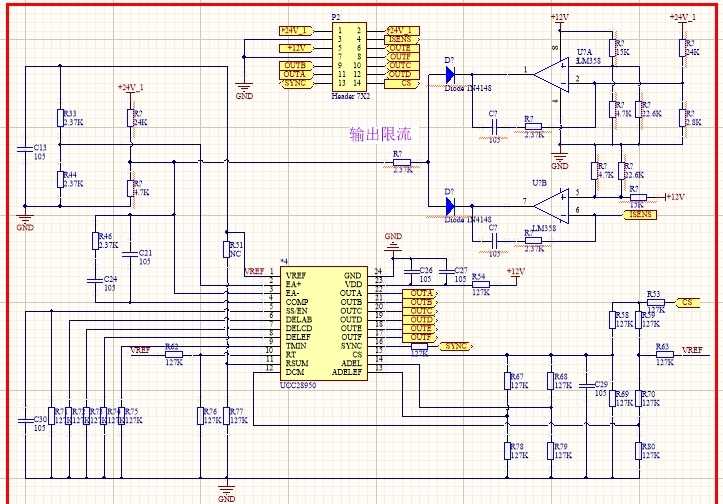Other Parts Discussed in Thread: PMP8740
Dear colleague,
The customer had updated schematic, as below:
Last E2E link:e2e.ti.com/.../778209
The technical requirement of the project customer is working on with UCC28950 is current limiting output.
That is, constant current output after the output exceeds 25A.
Now they have built a schematic of the circuit, and the idea is to use the current signal, compare it with the reference voltage, and adjust the COMP terminal. Please check whether this is feasible. The circuit diagram is as below, and the parameters are not determined.
Thanks a lot!
B.R
Rock Su


